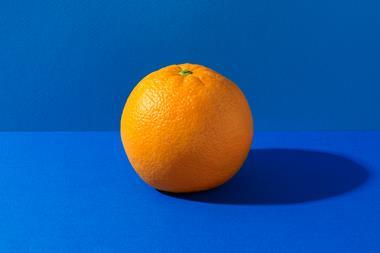Investigating the molecular basis of a nice cup of tea
As a keen tea drinker I was intrigued by a January 2020 tweet in which @andrechemist wondered if a tetrahedral teabag produced a better cup of tea. The question sent me into the literature to see what chemists knew about the shape of teabags and the resulting brew. In fact, just what did chemists know about making tea more generally?
Chemistry question for #ChemTwitter: is there an extractive advantage to the tetrahedral teabag over the traditionally shaped teabag? Or does it just look cooler?
— Andre the Chemist (@andrechemist) January 4, 2020
Quite a lot as it turns out. This should not have surprised me as tea is the most popular beverage in the world after water (a statistic nearly every paper on tea I read cited). In the end I wrote my own version of George Orwell’s 1946 essay, ‘A Nice Cup of Tea’ for Nature Chemistry. That essay grew into my book Steeped: The chemistry of tea.
There is a vast chemical literature on tea: I read some 500 papers. To flesh out what I was reading, I did some experiments of my own. I measured cooling curves for teapots of different materials, spiked my tea with extra doses of its naturally occurring amino acid l-theanine to see if it affected the flavour (researchers disagreed, but I could taste the difference) and sampled heavy water to determine if it is sweet (it is). Given its price tag I drew the line at buying deuterium-depleted water to see if that produced an exceptional cup of tea as one author suggested, and a lack of snow the past two winters kept me from scraping it off plum blossoms to reproduce a famously extraordinary cup detailed in an 8th century Chinese manuscript.

The biggest challenge I faced in writing Steeped – beyond the daunting scope of the literature – was how to present the chemistry in such a way that someone who had not taken a chemistry course could appreciate what was happening in a cup of tea on the molecular level. I settled on highlighting four big ideas that chemists use to explain the behaviour of molecules: atoms make up everything, opposites attract, getting close matters, and molecular function depends on molecular structure. I wrote an introductory chapter that fleshes out these concepts and provides a short course in how to read chemical structures. In case people were daunted by even that much chemistry, I wrote a three paragraph TL;DR that was just enough (I hoped) to get them through. I wanted not only to help non-chemists navigate the chemistry in the book, but to let them catch a glimpse of the world as chemists see it. I hope that readers without a science background will be able to wield these concepts to understand other everyday chemistry.
Researching Steeped changed my own tea making habits. My experiments measuring the cooling curves drove home to me the importance of pre-warming the teapot or the cup whenever possible. If I don’t, the temperature in my favorite Japanese cast-iron tetsukyūsu quickly drops below the optimum temperature for extracting caffeine and other desirable compounds. These days I reach more often for a double-walled glass pot that not only keeps the tea hot while it brews, but also keeps it at a drinkable temperature longer without the need for a tea cozy.
I have also become a more agitated brewer of tea. I repeatedly dunk teabags and swish my tea basket infuser as the tea steeps in order to expose the tea leaves more evenly to the solvent and extract more catechins—tea’s signature antioxidants. Finally I unscrew the lid on my travel mug when I can to inhale the volatile calming compounds such as linalool found in the steam.
While writing Steeped certainly enhanced my enjoyment of a cup of tea, there were several disquieting discoveries along the way. There are the remains of lots of bugs in my tea – the DNA of hundreds of different insects have been identified in tea leaves. I also now know how closely the white film that appears on tea when water is heated in the microwave resembles bathtub scum. Though that also means that the remedy is the same for both, some citric acid to chelate those hard water ions.
I particularly enjoyed encountering other women connected to the chemistry of tea. The earliest paper I read was from 1885, a careful analysis of an infusion of tea by Wilhelmina Green, a chemist I wish I knew more about. And while the invention of the modern teabag is usually credited to Thomas Sullivan in 1908, a US patent for such a teabag was issued to Roberta Lawson and Mary McLaren five years earlier.
And to answer the question that kicked off this project, it is not so much the shape of the teabag that matters as the size. To use one of the big ideas of chemistry, the tea leaves need enough space to get close to the water. Agitate well and enjoy a better cup of tea.
Register now to join Michelle Francl for a Chemistry World webinar on 15 February, where she’ll dive further into the chemistry of tea.












No comments yet